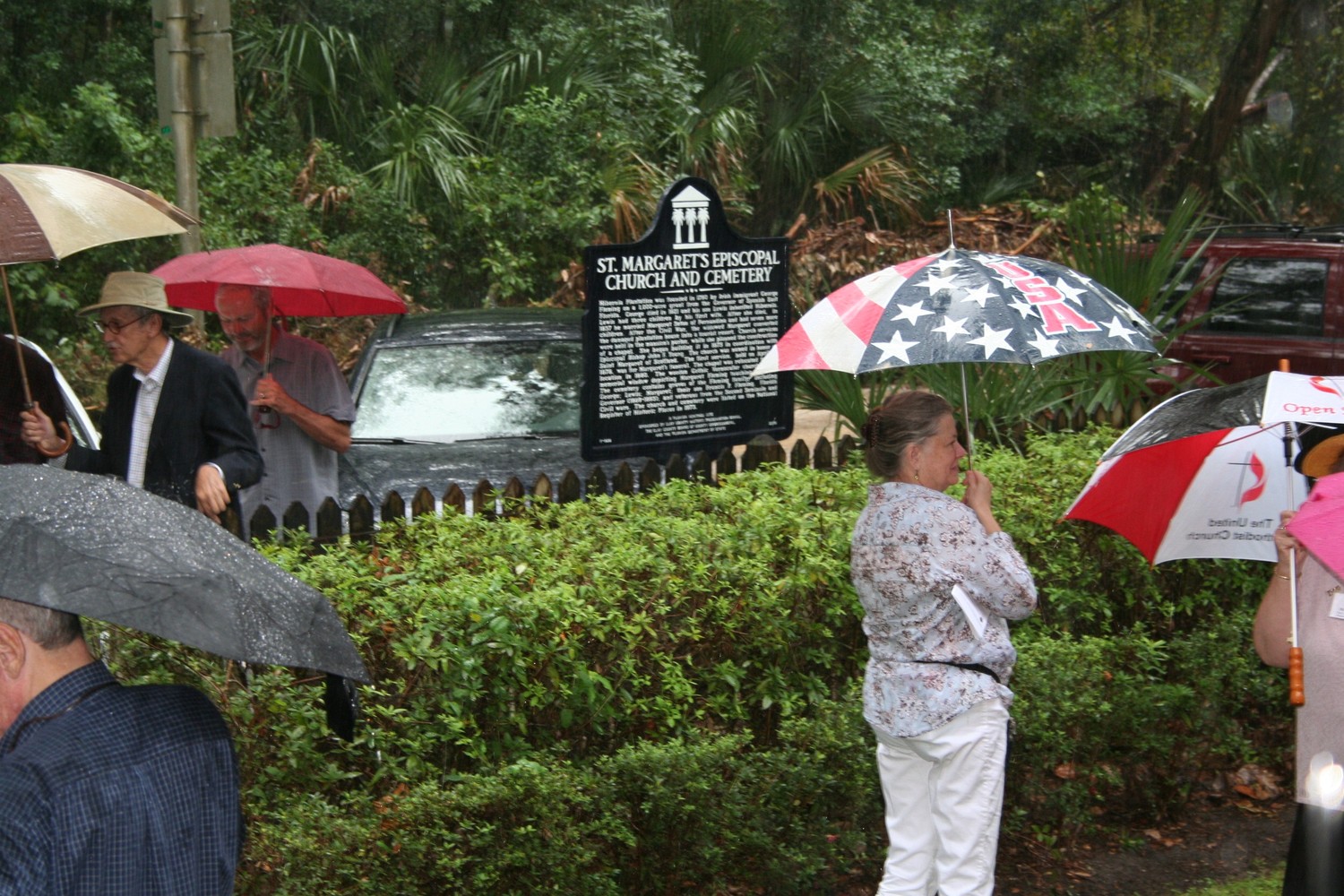Historical marker unveiled by county officials
FLEMING ISLAND – Although the National Register of Historic Places recognized its significance in 1973, St. Margaret’s Episcopal Church’s original chapel is now recognized as a significant Clay …
This item is available in full to subscribers.
Attention subscribers
To continue reading, you will need to either log in to your subscriber account, or purchase a new subscription.
If you are a current print subscriber, you can set up a free website account and connect your subscription to it by clicking here.
If you are a digital subscriber with an active, online-only subscription then you already have an account here. Just reset your password if you've not yet logged in to your account on this new site.
Otherwise, click here to view your options for subscribing.
Please log in to continueDon't have an ID?Print subscribersIf you're a print subscriber, but do not yet have an online account, click here to create one. Non-subscribersClick here to see your options for subscribing. Single day passYou also have the option of purchasing 24 hours of access, for $1.00. Click here to purchase a single day pass. |
Historical marker unveiled by county officials
FLEMING ISLAND – Although the National Register of Historic Places recognized its significance in 1973, St. Margaret’s Episcopal Church’s original chapel is now recognized as a significant Clay County historic site.
The Clay County Historic Preservation Board unveiled a new historic marker in front of the church on Sept. 30 marking the role that the church and Margaret Seton Fleming played in the early life of Clay County. More than 80 people attended an unveiling ceremony at the church that was built in 1897 in coordination with Episcopal Bishop John F. Young and named after Saint Margaret of Scotland.
“Historical markers take history out of the textbooks and they put it where you live, where you work, where you drive,” said Cynthia Stone, member of the Clay County Historic Preservation Board.
Stone said the new marker “joins 420 markers nationwide that honor women” for their role in their local communities, as well as another 7,648 historical markers nationwide that note the significance of churches. Stone said churches are much more than houses of worship.
“They are the centers of the community. So many early communities grew up around a church. When the church came, there was growth. The church is the heart of the community. St. Margaret’s Church was a labor of love by Margaret Fleming,” Stone said.
Stone said that while Margaret Fleming’s story is not printed in national history books, her story and her significance to Clay County is in local history books.
“She was a role model of kindness and grace and mercy that we would do well to emulate today,” Stone said.
Stone recognized fellow board member Julia Cramer who pushed to have the marker erected. Cramer said when she moved to Fleming Island in 1982, she read author Eugenia Price’s historical novel, “Margaret’s Story,” which became an inspiration to her. She said the marker took about 18-to-24 months to coordinate with the Florida Department of State, which under state law, gives final approval for such markers to be placed in the state.
“It’s a visual, so anybody passing by will now see it. This church gets a lot of traffic from people just coming to look at the cemetery. Now they can come to read the marker,” Cramer said.
The church sits in what was once Hibernia Plantation, which was founded in 1790 by Irish immigrant George Fleming on a 1,000-acre land grant from the governor of East Florida. When George Fleming died in 1821, his son Lewis Fleming inherited Hibernia. He had three children with his first wife, Cuban-born Augustina Cortes Fleming, who died in 1832 during childbirth. In 1837, George Fleming married Margaret Seton of Fernandina and went on to have seven children together.
Jokingly referring to himself as an “outlaw,” Scott Ritchie of Austin, Texas said while it’s great to see the dedication of the new county historical marker, the best news to come out of the Sept. 30 event was that the Episcopal Diocese plans to reopen the church within the next year.
“That just warms my heart. We all want to see St. Margaret’s open again and the excitement is more around that, I would say in the conversations we’ve had. The Diocese is involved in this, they’re saying they’re going to open it again and we love the historic recognition, but even more, everybody in the family would love to see [the church] open again,” said Ritchie whose wife Margot Fleming Ritchie is the great-great-great granddaughter of George Fleming. Ritchie, who still owns a home in Hibernia, said his children were baptized in St. Margaret’s historic chapel.
Ritchie describes himself as an historian and has been researching and working on a book about the Fleming family for years. He said the working title, “Stick to the old place: the Flemings of Fleming Island,” comes from a statement Charles Seton Fleming, Margaret’s oldest son, uttered to his mother upon the death of his father, Lewis Fleming.
“I think it’s all a positive influence to keep the church as it is because at some point it becomes an historical place, more than a place of worship. It’s too bad, in a way – I think it can be a place of worship – but it’s going to be remembered more as a historical place in the local community,” said Ken Keefe of Jacksonville, a direct descendant of Margaret Fleming who attended the event.
While he has lived in Hibernia for 30 years, Connecticut native and Fleming family descendant Richard Austin has high hopes for preserving the enclave as Clay County continues to grow.
“Hopefully, there’s that preservation that can stay in a small little area as the world grows around it,” Austin said.











